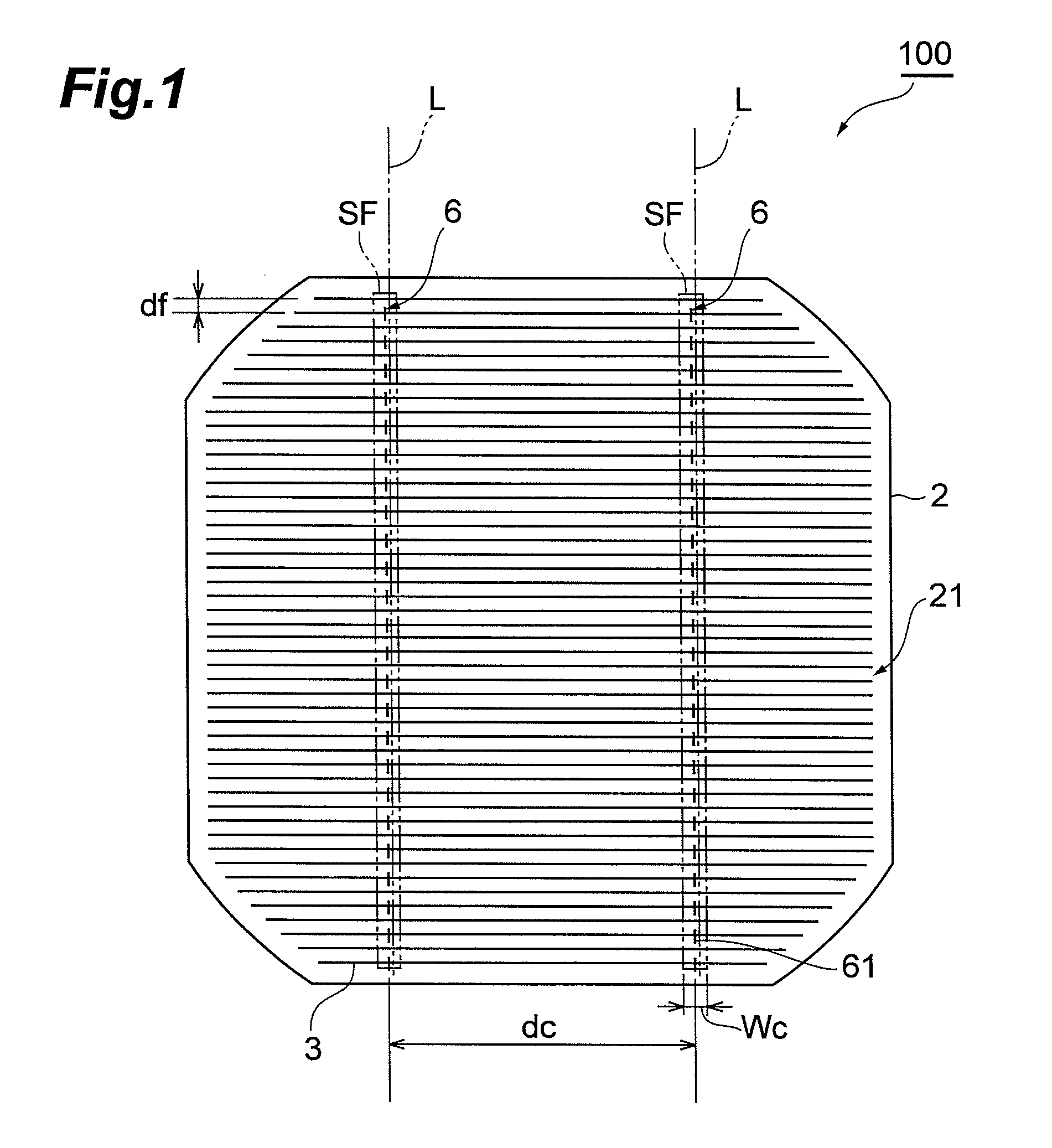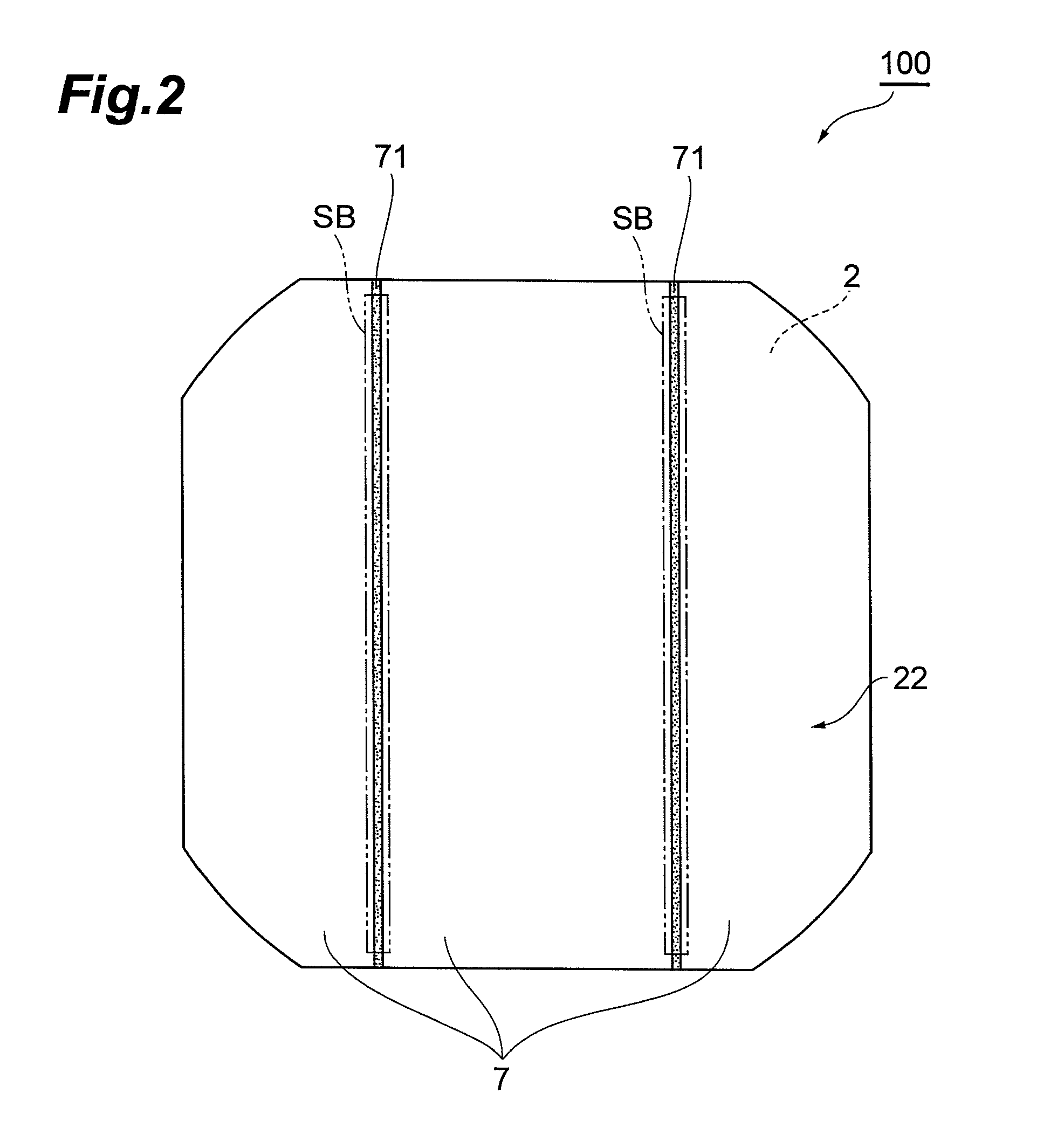Solar battery cell, solar battery module and method of making solar battery module
a solar battery and module technology, applied in the field solar battery modules and solar battery modules, can solve the problems of increasing manufacturing costs, warping of solar battery cells, and reducing the yield of connection steps, so as to suppress the increase in manufacturing costs
- Summary
- Abstract
- Description
- Claims
- Application Information
AI Technical Summary
Benefits of technology
Problems solved by technology
Method used
Image
Examples
first embodiment
[0040]FIG. 1 is a plan view showing a light receiving surface of a solar battery cell according to the present invention. FIG. 2 is a bottom view showing a back surface of the solar battery cell in FIG. 1. FIG. 3 is a perspective view showing that a plurality of the solar battery cells in FIG. 1 are connected together. FIG. 4 is a schematic side view of FIG. 3.
[0041]As shown in FIG. 1, a solar battery cell 100 is such that a plurality of the solar battery cells 100 are electrically connected together in series or parallel to form one solar battery module. The solar battery cell 100 includes a substrate 2. The substrate 2 is generally square and has four circular-arc corners. One surface of the substrate 2 corresponds to a light receiving surface 21. The other surface of the substrate 2 corresponds to a back surface 22 (see FIG. 2). The substrate 2 may be formed of at least one of a single crystal of Si, a polycrystal of Si, and a non-crystal of Si. On the light receiving surface 21 ...
third embodiment
[0071]Of course, the solar battery cell 400 described above exerts effects similar to those of the solar battery cell 300 according to the
[0072]Now, a solar battery cell according to a fifth embodiment of the present invention will be described. In the present embodiment, mainly differences from the above-described third embodiment will be described.
[0073]FIG. 8 is a plan view showing a back surface of the solar battery cell according to the fifth embodiment of the present invention. As shown in FIG. 8, a solar battery cell 500 according to the fifth embodiment is different from the solar battery cell 300 according to the third embodiment (see FIG. 6) in that the solar battery cell 500 includes back surface alignment marks 75 each with the thick line portions 73b longer than the thin line portions 73a, instead of the back surface alignment marks 73 each with the thin line portions 73a and the thick line portions 73b similar in length.
[0074]Of course, the solar battery cell 500 descr...
PUM
 Login to View More
Login to View More Abstract
Description
Claims
Application Information
 Login to View More
Login to View More - R&D
- Intellectual Property
- Life Sciences
- Materials
- Tech Scout
- Unparalleled Data Quality
- Higher Quality Content
- 60% Fewer Hallucinations
Browse by: Latest US Patents, China's latest patents, Technical Efficacy Thesaurus, Application Domain, Technology Topic, Popular Technical Reports.
© 2025 PatSnap. All rights reserved.Legal|Privacy policy|Modern Slavery Act Transparency Statement|Sitemap|About US| Contact US: help@patsnap.com



